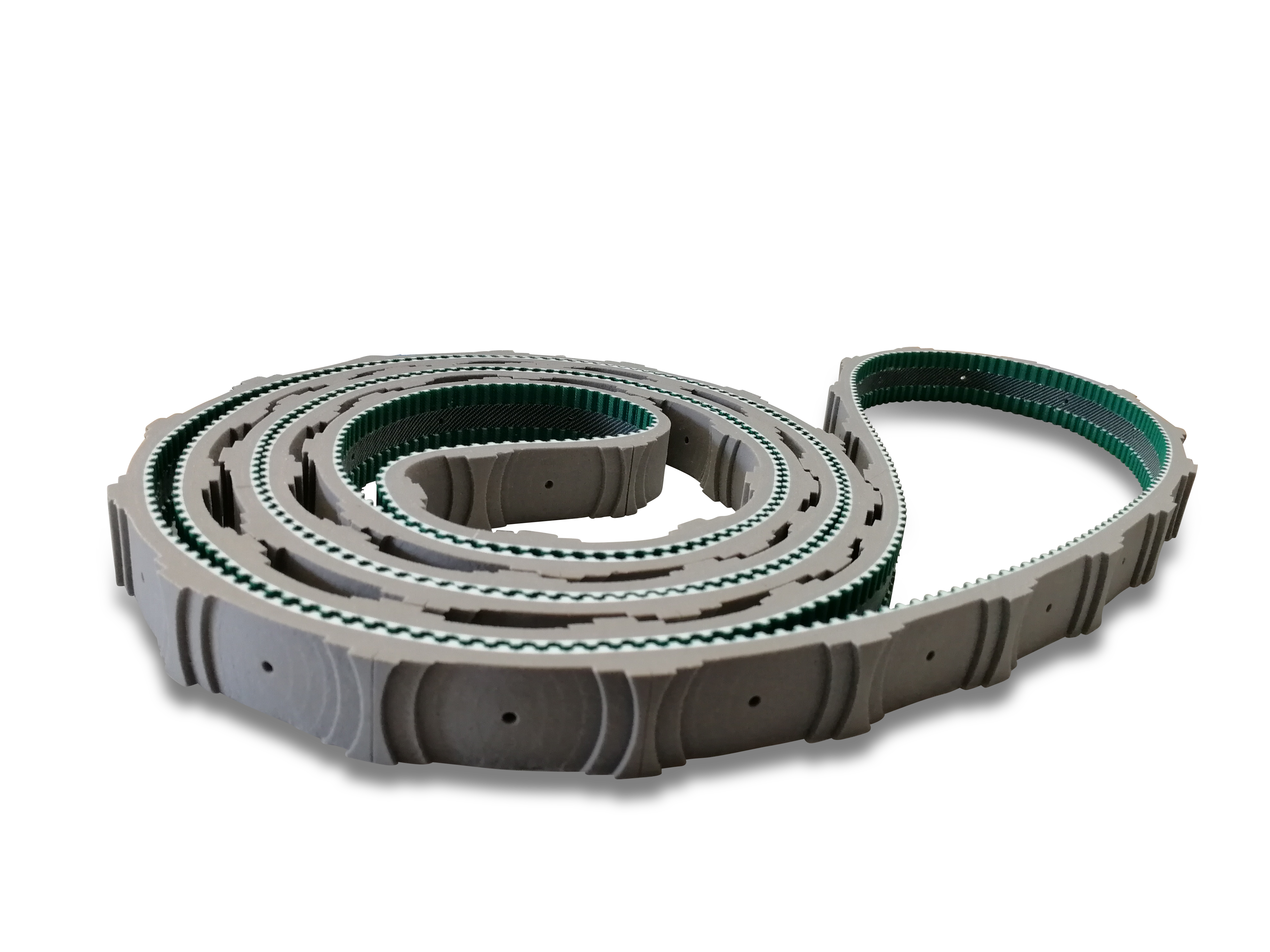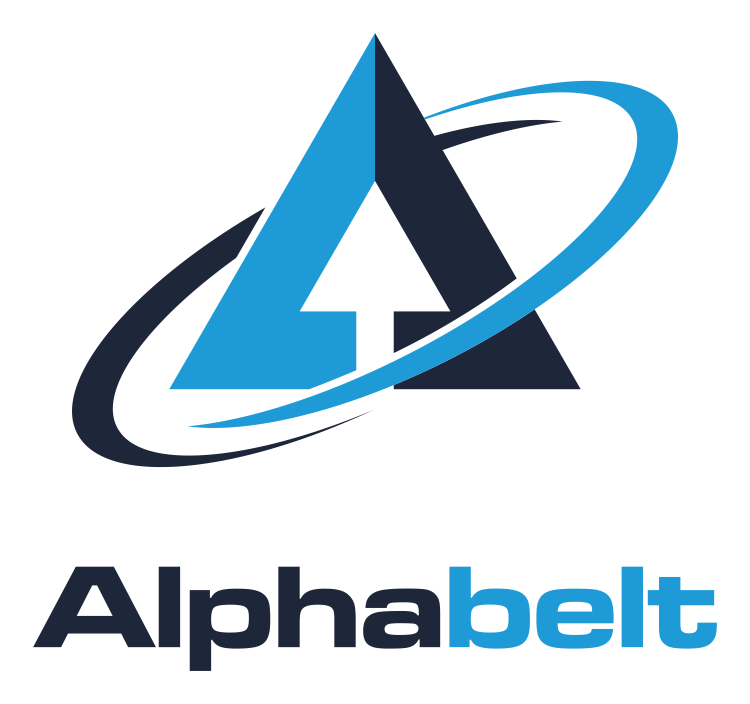Custom-made timing belts
Individual tailored timing belts

Custom-made timing belts
There is hardly any other mechanical drive element that has proven its value over such a long time and developed into a high-tech product through constant optimization as the timing belt. While timing belts continue to fulfill their classic role in the transmission of high drive power, they are now also used for demanding conveying tasks in numerous branches of industry.
Over the years, the number of different variants has increased significantly, so that the optimum timing belt is available for almost every application. Custom timing belts are not only unsurpassed in terms of their accuracy of fit but are also optimally equipped for their specific purpose. This results in less wear, longer service life and significantly more efficient operation.
Types of timing belts
The decisive factors for the properties and the application profile of a timing belt are the shape and structure of the belt, its dimensions, the materials used and, if necessary, individual refinement.
As base materials for the belt body, polyurethane and neoprene (chloroprene rubber) are well proven. For the tension cords, steel and aramid are among the most commonly used materials.
Timing belts can basically be classified into three groups according to their manufacturing method:
- Belts by the meter (welded ends)
- Cast molded rolls (endless)
- Flex timing belts (endless)
Belts by the meter
In the manufacture of timing belts by the meter, the molten polyurethane is extruded onto the tension cords in a continuous process. For each tooth form and pitch, a separate forming wheel is used. After the polyurethane has cooled and solidified, the timing belts can be coiled.
When required, a piece of any length is cut from the open roll and further processed into a closed belt. Usually, both ends are welded together to form a ring. However, they can also be optionally closed by means of a mechanical pin connection. The width of the timing belts is cut or ground to the required dimension. Any desired belt length, considering the tooth pitch, can be manufactured quickly and easily from meter goods.
As the tension cords are interrupted at the splice, it should be considered that the tensile strength of these timing belts is lower than that of endless ones.
Cast molded belts
Cast molded timing belts have no joints and therefore no potential weak points. Therefore, they can transmit higher power. They are manufactured by casting into a mold. In the first manufacturing step, the tension cords are coiled onto a mold core. After the mold is closed, the molten belt material (neoprene or polyurethane) is then pressed into it. The individual timing belts can be cut to any width from the resulting annular roll.
In this process, a separate mold is required for each tooth shape and pitch as well as for each length. Cast molded rolls can be produced in any individual length, but a corresponding mold must first be made for each special length. Therefore, certain minimum order quantities apply to cast molded timing belts in special lengths.
- The shortest cast molded roll produced by Alphabelt to date is a 32T5-90 timing belt with steel tension cords for BRABENDER TECHNOLOGIE GMBH & CO. KG.
- As one of the few, possibly even the only manufacturer, Alphabelt produces replacement belts for the speed governor in VW industrial engines of TYPE 122 (comparison number VW122135171A, 64 teeth, width 10 mm) on customer request.
Flex timing belts
Flex timing belts are also manufactured with closed tension cords but offer the additional advantage over cast molded rolls that a separate mold is not required for each length. During production, the tension cords are wound onto two forming wheels, whose distance from each other can be adjusted according to the desired belt length. For the belt body, polyurethane is applied to the tension cords in a circumferential extrusion process.
Flex timing belts are available in any length from 900 mm to 19,500 mm depending on the tooth pitch. The maximum belt width is 150 mm.
Possibilities of customization
To finally equip the timing belt perfectly for its very special application, numerous refinement processes are available. If required, these can be combined with each other, resulting in almost infinite possibilities for individualization and a really tailor-made timing belt.
A suitable coating improves the functionality of the belt surface in terms of its grip properties for certain conveying tasks or its resistance to external influences such as heat or chemicals.
Mechanical machining processes such as punching the belt or milling surface textures, pocket geometries and suction channels in any design increase precision for certain conveyed goods and tasks.
Cleats, which can either be welded directly to the belt or alternatively mounted as interchangeable cams, enable form-fit transport of piece goods and small parts. Cams are already available by Alphabelt in over 1000 different designs. In addition, further variants can be manufactured completely in accordance with customer specifications.
For a fast and uncomplicated change of timing belts without having to disassemble the machine, mechanical belt connections such as plastic connectors, PinJoint or ERO Joint HP connections are available. These allow open installation of the belt and subsequent connection of the two ends inside the machine.
Individual tailored timing belts
At Alphabelt, the customer can let his ideas run free. Together, we develop tailor-made solutions for every drive and conveying task.
Contact

